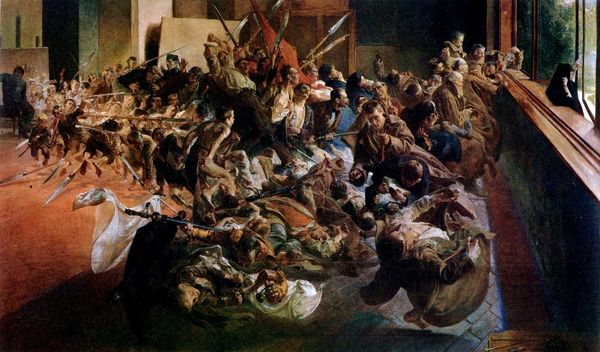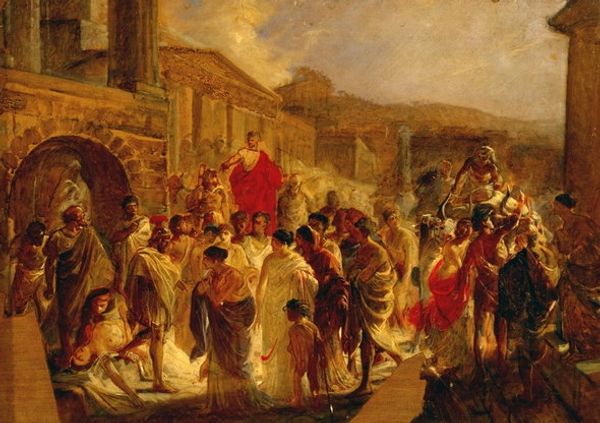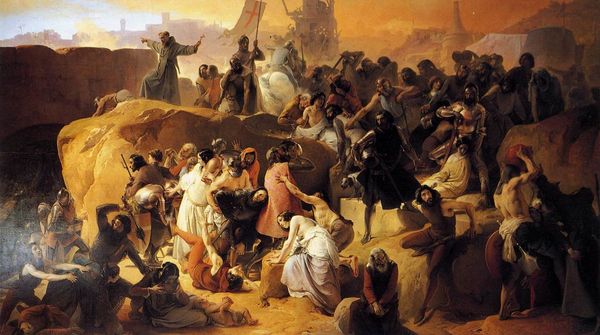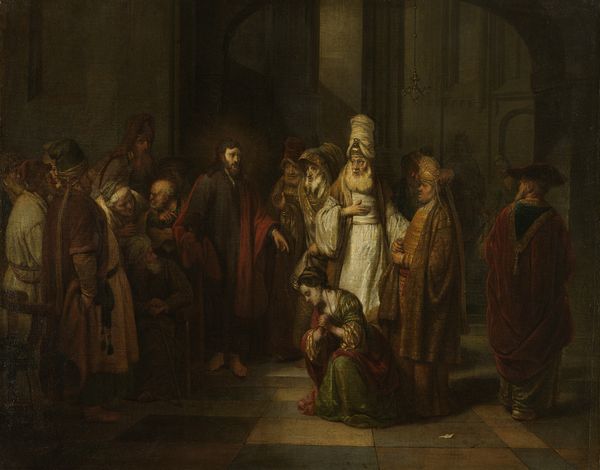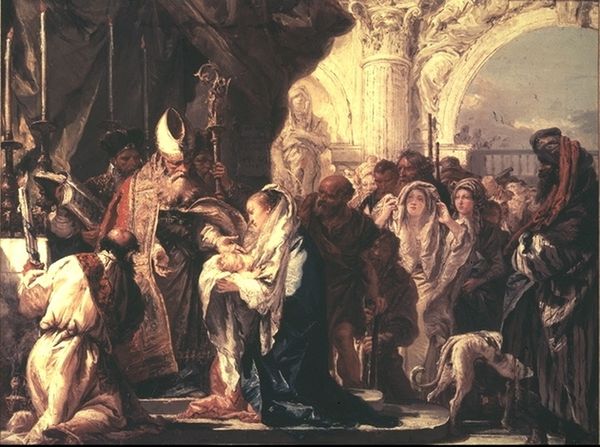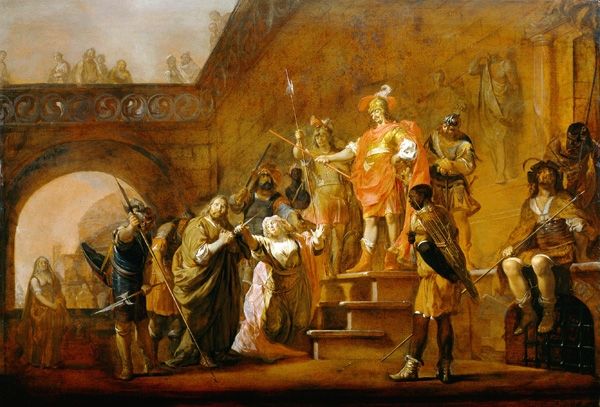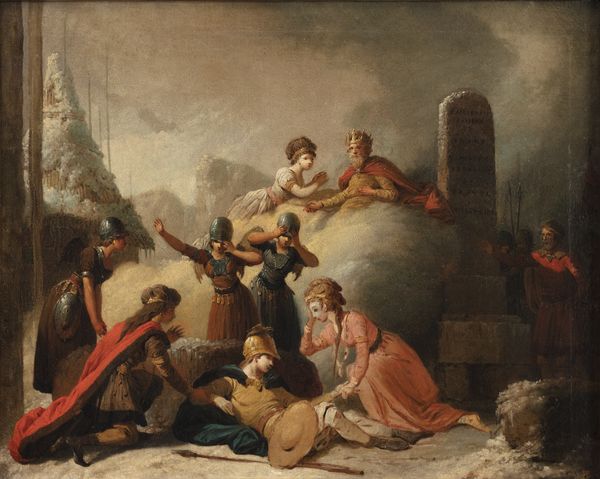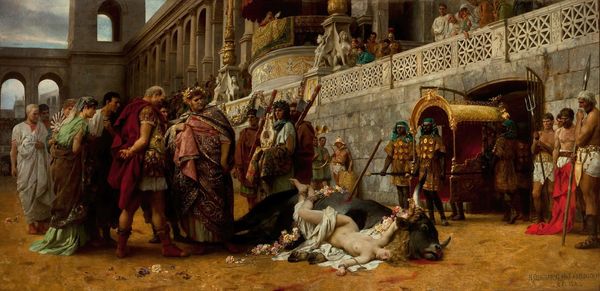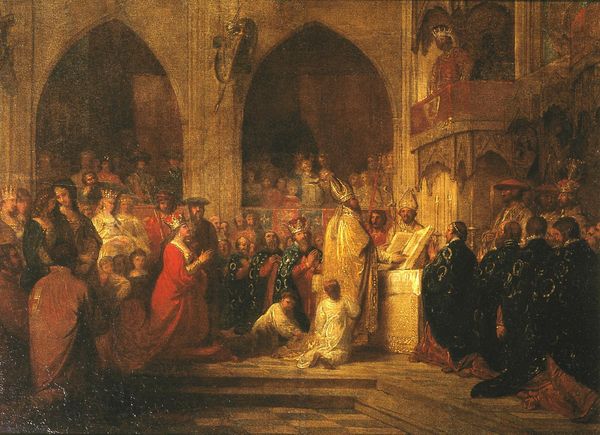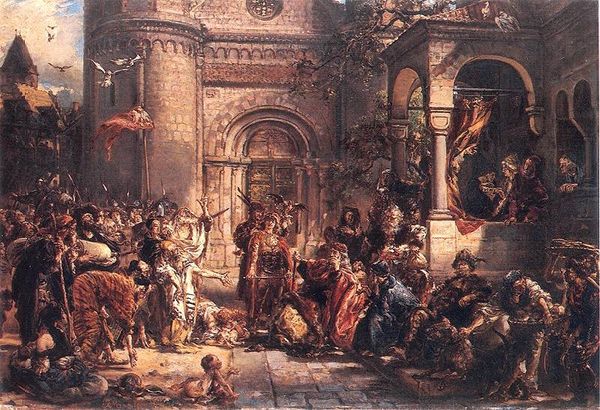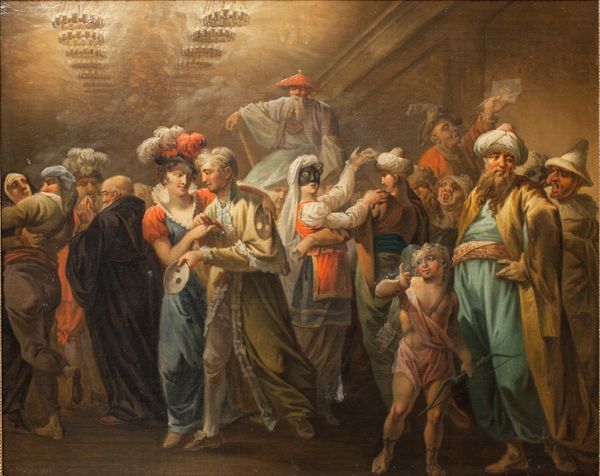
painting, oil-paint
#
portrait
#
neoclacissism
#
narrative-art
#
painting
#
oil-paint
#
landscape
#
figuration
#
oil painting
#
soldier
#
history-painting
#
academic-art
#
realism
Dimensions: 523 x 715 cm
Copyright: Public domain
Curator: What a dramatic scene! So filled with contrasts of light and shadow... Antoine-Jean Gros painted this monumental oil on canvas, "Bonaparte Visiting the Plague Victims of Jaffa," in 1804. Editor: It's undeniably arresting, almost operatic in its presentation of suffering and supposed heroism. Immediately I’m struck by the staged nature of it, how it romanticizes a brutal colonial campaign through the lens of the savior narrative. Curator: Absolutely, that's Neoclassicism for you, taking inspiration from historical and mythological subjects with grandiosity. Here, we see Napoleon, posing messianically as he visits his troops stricken with plague in Jaffa. Notice how Gros uses light to draw your eye to Bonaparte. It's as if he's radiating some kind of divine light... even when he's probably holding his breath. Editor: The propaganda is laid on thick! Gros presents Bonaparte as Christ-like, fearlessly touching a plague sore. Yet the historical context tells a far different story: the devastating impact of the French campaign on the local population and Bonaparte’s eventual order to poison a large number of his own sick soldiers when retreat became inevitable. Curator: Right, the painting is history-adjacent at best! I imagine Gros wanted to show Bonaparte as a benevolent leader, a hero caring for his men in a moment of crisis. Think about the composition: the architectural arches create a theatrical space, framing the suffering while Bonaparte remains untouched. It is a pretty self-serving painting. Editor: Exactly! Gros skillfully employs the visual language of sacrifice and empathy. But through a contemporary lens, this work is fraught. It serves to sanitize imperial violence and obscure the true cost of war—both on the colonizers and the colonized. And look at who gets centered: a white man in uniform in a Muslim space. Curator: Though problematic in hindsight, Gros did bring an element of realism to his paintings which at the time marked a departure. Instead of classically idealized figures, we see realistic depictions of disease, expressions of pain and despair etched on their faces, like the shadow of Death looming just behind Bonaparte. Editor: And perhaps it is there, too. It just depends on what story you’re trained to recognize as worthy of being seen. To me, the plague victims serve less as figures to be helped, than extras serving to burnish Bonaparte’s messianic image. Curator: Yes, it's a fascinating picture, and once you start looking deeper at the social narratives it reflects it is full of unexpected corners and passages! Editor: Absolutely! History painting isn’t just a record of the past; it’s also a reflection of the power dynamics of its present.
Comments
No comments
Be the first to comment and join the conversation on the ultimate creative platform.
